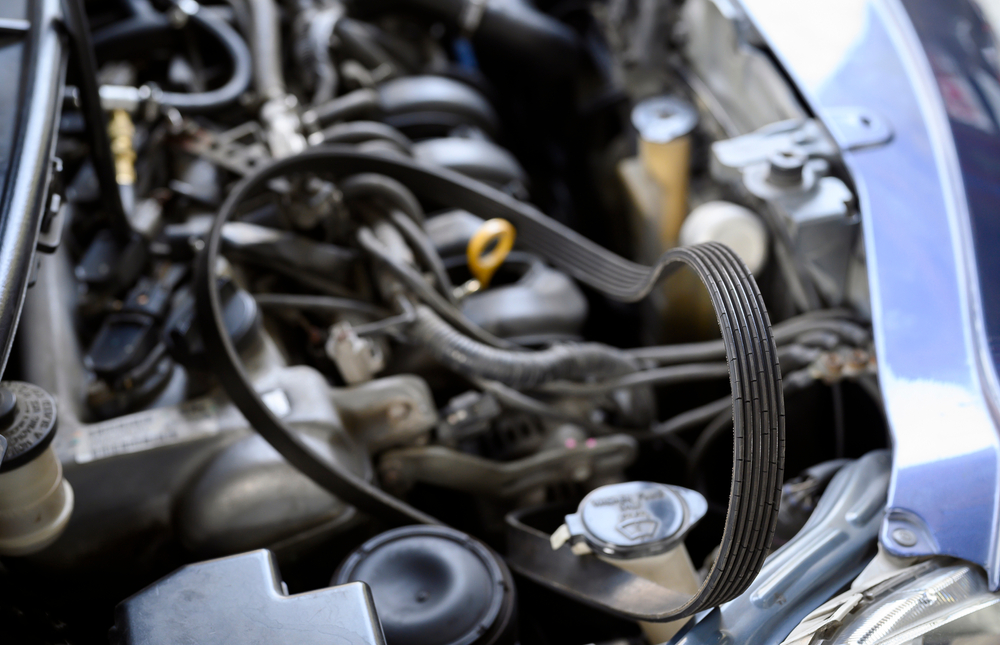
24 Jun What are the Differences Between a Serpentine Belt and a Timing Belt?
When it comes to maintaining your vehicle, understanding the components that keep it running smoothly is essential. Two critical belts in your car are the serpentine belt and the timing belt. While they may seem similar, they serve distinct functions and have different maintenance needs. In this blog post, we’ll explore the differences between a serpentine belt and a timing belt, why they are important, and how to ensure they are in good working condition.
What is a Serpentine Belt?
A serpentine belt, also known as a drive belt, is a long, winding belt that runs through multiple components of your engine. It powers essential accessories such as the alternator, power steering pump, water pump, and air conditioning compressor. Without a functioning serpentine belt, these critical components would fail, leading to a breakdown.
Signs Your Serpentine Belt Needs Replacement
- Squealing Noise: A high-pitched squeal when you start the engine or accelerate can indicate a worn serpentine belt.
- Visible Cracks and Wear: Regularly inspect the belt for visible signs of damage.
- Loss of Power Steering or Overheating: If the belt breaks, you might lose power steering or experience engine overheating.
Preventative Maintenance for Serpentine Belts
Regular inspection and timely replacement of the serpentine belt are crucial. It’s generally recommended to replace it every 60,000 to 100,000 miles, depending on your vehicle’s specifications and driving conditions. Preventative maintenance can save you from unexpected breakdowns and costly repairs.
What is a Timing Belt?
The timing belt is a crucial component that synchronizes the rotation of the crankshaft and camshaft, ensuring that the engine’s valves open and close at the right times during each cylinder’s intake and exhaust strokes. This synchronization is vital for your engine to run smoothly.
Signs Your Timing Belt Needs Replacement
- Ticking Noise from the Engine: A ticking noise can indicate a worn timing belt.
- Engine Misfire: If the timing belt slips, it can cause the engine cylinders to open and close out of sync.
- Oil Leak at the Front of the Engine: Oil leaking from the timing belt cover can indicate a problem.
Timing Belt Replacement and Maintenance
Timing belt replacement is critical and should be performed according to your vehicle manufacturer’s recommendations, typically every 60,000 to 100,000 miles. Failing to replace a worn timing belt can lead to severe engine damage.
Serpentine Belt vs. Timing Belt: Key Differences
Function
- Serpentine Belt: Powers various engine accessories.
- Timing Belt: Ensures synchronization of the engine’s internal components.
In terms of importance, both belts are crucial, but the timing belt’s role in synchronization makes it vital for engine function.
Lifespan
- Serpentine Belt: Generally lasts between 60,000 to 100,000 miles.
- Timing Belt: Also has a lifespan of 60,000 to 100,000 miles but is more critical to engine function.
Despite similar lifespans, the timing belt’s critical role means that its failure can lead to more severe engine damage compared to a serpentine belt failure.
Maintenance
- Serpentine Belt: Easier and less costly to replace.
- Timing Belt: Requires more labor and is costlier due to its critical role in engine operation.
When considering maintenance, the serpentine belt is generally more straightforward and economical to replace, while the timing belt, due to its complexity and importance, demands more attention and investment.
Why Regular Belt Maintenance is Crucial?
Timely replacement and maintenance of both belts are crucial for the health and longevity of your vehicle. Neglecting these components can lead to significant engine damage, costly repairs, and inconvenient breakdowns. At Heights Swedish Solutions, we specialize in preventative maintenance to keep your car running smoothly and efficiently.
FAQs About Serpentine Belts and Timing Belts
What Happens if My Timing Belt Breaks?
A broken timing belt can cause severe engine damage, as it may lead to misfiring or complete engine failure. It’s essential to adhere to the replacement schedule.
Can I Replace These Belts Myself?
While some car enthusiasts might feel comfortable replacing a serpentine belt, a timing belt replacement is more complex and typically requires a professional mechanic due to its critical role in engine function.
Why Choose Heights Swedish Solutions for Your Belt Maintenance?
At Heights Swedish Solutions, we pride ourselves on our exceptional customer service and high-quality work. Our team is experienced in servicing a variety of European vehicles. We understand the unique needs of your vehicle and offer comprehensive services to ensure its longevity and performance.
We are affiliated with ASA, AAA, ASE, Bosch Service, and Castrol, ensuring that our services meet the highest standards. Our commitment to honesty, value, and communication means you’ll always be informed about your vehicle’s needs and the work being done.
Book Your Preventative Maintenance Appointment Today
Don’t wait for a breakdown to address your serpentine belt or timing belt needs. Schedule your preventative maintenance appointment with Heights Swedish Solutions today. Call us at (216) 371-5100 or visit our website to book your service.

